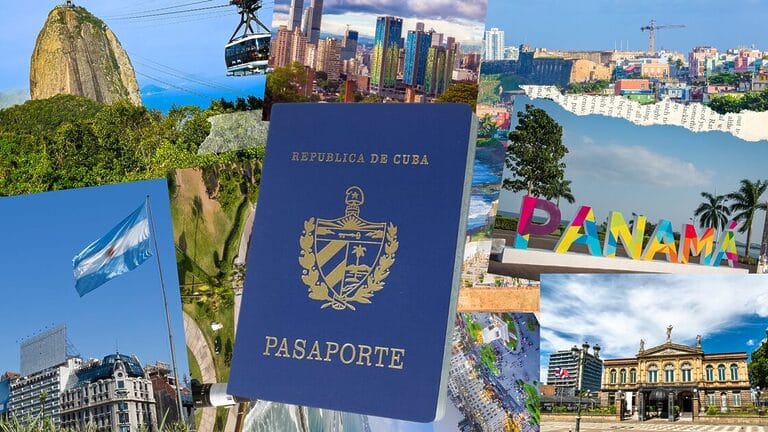Cuba is taking bold steps to revitalize its tourism sector, which has faced significant declines in recent years. In an ambitious move aimed at boosting regional travel, Cuba’s Minister of Tourism, Juan Carlos García Granda, proposed the creation of a shared visa system for Latin American countries, modeled after Europe’s Schengen Area. This proposal, introduced in Bogotá, Colombia, during a meeting with tourism operators and airlines, aims to facilitate smoother travel across the region and increase the flow of international visitors.
The Minister’s idea, often referred to as the “Caribbean Schengen,” is envisioned to streamline immigration processes for tourists arriving in Cuba and traveling onward to other destinations in Latin America. García Granda highlighted that this new approach would significantly ease the travel experience, particularly for tourists coming from distant markets like China, Russia, and Turkey. By simplifying bureaucratic hurdles, the goal is to create a seamless travel experience for visitors arriving in Havana, who would then have easier access to countries such as Cartagena, Cancún, and Lima.
“This regional visa could revolutionize travel across Latin America. We should look at global models and apply them regionally to reap mutual benefits from distant tourist flows,” García Granda said during his speech at the Hotel Dann Carlton in Bogotá.
Declining Visitor Numbers: A Catalyst for Change
The urgency of this proposal stems from Cuba’s current tourism challenges. The number of tourists visiting the island has fallen dramatically, from 4.7 million in 2017 to just 2.2 million in 2024. This sharp decline has been attributed to a variety of factors, including the global COVID-19 pandemic, Cuba’s ongoing energy crisis, and the re-imposition of strict U.S. policies under the Biden administration. In addition, Cuba’s designation as a state sponsor of terrorism by the U.S. has led to a chilling effect on potential European visitors, who fear repercussions from traveling to the U.S. later.
For García Granda, this represents more than just a decline in numbers—it’s a crisis that demands a creative solution. Cuba is now looking to innovative approaches that can not only restore tourism numbers but also reposition the country as a key player in the regional tourism market.
Focusing on China: A Strategic Pivot
While the U.S. market has seen a decline, Cuba has turned its attention eastward, particularly to China. As part of his efforts to diversify Cuba’s tourist base, García Granda has worked to establish stronger connections with Chinese travelers. Currently, there are two weekly flights between Beijing and Havana, and Cuba has lifted visa requirements for Chinese citizens, a move aimed at facilitating easier travel to the island.
“We see China as a key player in our expansion strategy,” said García Granda. The aim is not only to attract Chinese visitors to Cuba but also to foster broader regional collaboration. The Minister believes that if Cuba successfully taps into this emerging market, it could have a ripple effect across Latin America, benefiting neighboring countries as well.
Cuba is also focused on offering more than just the classic “sun and beach” vacation. By enhancing air connectivity, reducing immigration barriers, and collaborating with neighboring Latin American countries, Cuba hopes to build a more diverse tourism offering that appeals to the growing Chinese middle class and their evolving travel preferences.
Is a “Latin American Schengen” Visa Feasible?
García Granda’s idea of a regional visa system akin to the Schengen Area is an ambitious one, but it faces significant hurdles. Unlike Europe, Latin America lacks the institutional infrastructure, political will, and legal frameworks necessary to establish such a system. Countries in the region have varied immigration policies, differing economic priorities, and, in some cases, political instability that could complicate the creation of a unified visa system.
Europe’s Schengen Area, which allows for free movement among 27 countries, was built over several decades and required extensive negotiation, political commitment, and the development of a shared legal and technological infrastructure. Latin America, on the other hand, lacks the same level of integration, and the political realities of the region may make such an endeavor more symbolic than practical in the short term.
However, García Granda’s vision is not without merit. By advocating for a unified approach to tourism, the proposal is addressing the current fragmentation in the region’s tourism policies. For many Latin American countries, a collaborative tourism strategy could be a game-changer in attracting more international visitors.
Looking Ahead: Challenges and Opportunities
Despite the challenges, the idea of a “Caribbean Schengen” could provide long-term benefits if it eventually becomes a reality. It is a clear signal that Cuba, and possibly other Latin American countries, are ready to explore bold, new strategies to address the growing competition from more integrated global tourism destinations.
However, this proposal needs to go beyond rhetoric. It is essential for Cuba to focus on addressing the deeper structural issues within its tourism industry, such as power outages, supply shortages, and the broader socio-political challenges that continue to impact the country’s image abroad. While easing travel barriers is an important step, Cuba must also take action to restore its global reputation as a competitive tourist destination.
In conclusion, while the Caribbean Schengen is a visionary proposal that may seem distant and difficult to implement, it reflects Cuba’s willingness to embrace innovation in the face of a tourism crisis. The feasibility of such an initiative will depend on the political and diplomatic will of Latin American nations, as well as the long-term commitment to developing a shared infrastructure that facilitates seamless travel across the region.
For now, Cuba’s proposed visa system offers a glimpse into the potential future of Latin American tourism, one that could transform how the region approaches international visitors. While the road ahead may be fraught with obstacles, the idea signals a willingness to think creatively about tourism policy and regional cooperation. (https://www.travelandtourworld.com/news/article/here-is-how-cubas-caribbean-schengen-visa-could-now-revolutionize-latin-american-tourism-and-attract-chinese-travelers/)



































